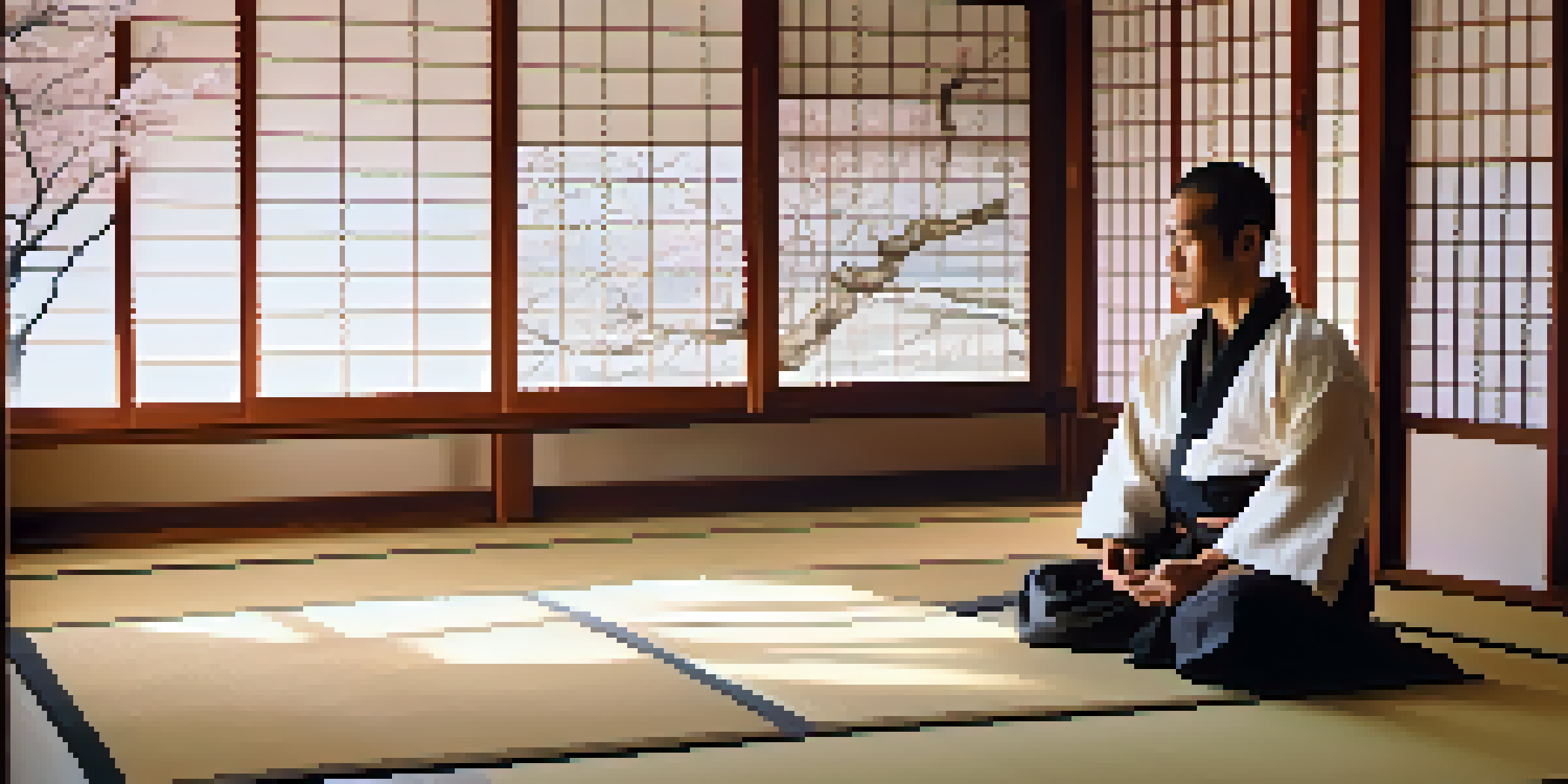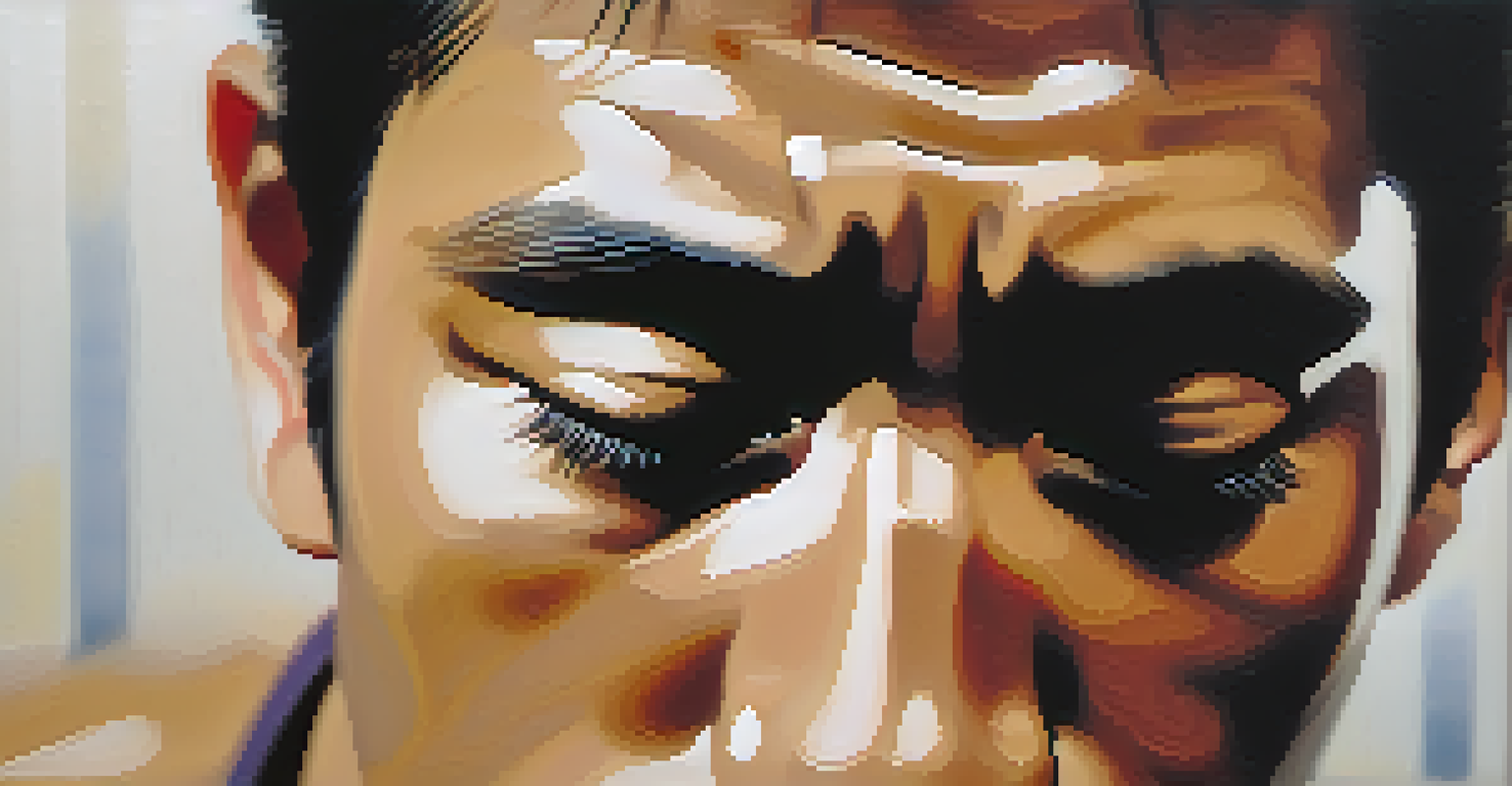Meditation Techniques in Martial Arts: A Path to Inner Peace

Understanding the Role of Meditation in Martial Arts
Meditation is often viewed as a solitary practice, but in martial arts, it plays a crucial role in enhancing performance. By integrating meditation techniques, practitioners can cultivate a deeper connection with their bodies and minds. This connection is vital for achieving the balance and focus necessary for effective martial arts training.
The mind is everything. What you think you become.
For many martial artists, meditation serves as a bridge to understanding the principles of their art. It helps to clear the mind, allowing for better concentration on techniques and movements. This clarity can transform a chaotic training session into a harmonious experience where every move feels intentional and fluid.
Moreover, meditation in martial arts is not just about sitting quietly; it involves active engagement with one’s breath and energy. This dynamic aspect helps practitioners harness their mental and physical energies, making it an essential part of their journey toward mastery.
Breathing Techniques: The Foundation of Meditation
Breathing techniques are foundational to both meditation and martial arts, serving as the bedrock for deeper practices. Controlled breathing helps regulate the body's responses, promoting relaxation and focus. For martial artists, mastering breath control can mean the difference between a successful technique and a missed opportunity.

One common practice is the 'diaphragmatic breathing' technique, where practitioners focus on breathing deeply into the abdomen. This method not only helps calm the mind but also increases stamina during training. By integrating this breathing technique into their routine, martial artists can enhance their overall performance and resilience.
Meditation Enhances Martial Arts Focus
Integrating meditation techniques helps martial artists achieve better concentration and performance during training.
As martial artists learn to synchronize their movements with their breath, they find a rhythm that enhances their practice. This flow creates a meditative state, allowing them to execute techniques with grace and precision, ultimately leading to a more fulfilling experience.
Visualization: Creating Mental Clarity in Practice
Visualization is a powerful meditation technique that allows martial artists to mentally rehearse their skills. By picturing themselves executing techniques perfectly, practitioners can build confidence and improve muscle memory. This mental practice can be just as effective as physical training, reinforcing the connection between mind and body.
In the midst of movement and chaos, keep stillness inside of you.
Many martial artists use guided visualization exercises to enhance their focus and clarity. They may imagine themselves in a dojo, performing their forms with precision and ease. This practice not only prepares them for actual combat scenarios but also fosters a sense of inner peace, as they visualize success rather than fear.
Integrating visualization into training routines helps to create a positive mindset. When martial artists cultivate this mental clarity, they find that their skills not only improve but their overall experience becomes more enjoyable and fulfilling.
Mindfulness: Staying Present in the Moment
Mindfulness is a key principle in both meditation and martial arts, emphasizing the importance of being fully present. Practicing mindfulness helps martial artists to engage completely with their training, reducing distractions and enhancing performance. By focusing on the present moment, they can respond more effectively to their opponents and obstacles.
One effective method of cultivating mindfulness is through 'body scanning,' where practitioners pay attention to different parts of their body during training. This technique allows them to identify areas of tension and release them, resulting in improved fluidity and movement. It’s a simple yet powerful way to enhance their awareness and adaptability.
Breathing Techniques Boost Resilience
Mastering controlled breathing is essential for martial artists, promoting relaxation and stamina in their practice.
Incorporating mindfulness into martial arts practice not only improves physical skills but also promotes emotional stability. As practitioners learn to remain present, they develop resilience, helping them navigate the challenges both in and out of the dojo.
The Benefits of Meditation for Stress Relief
One of the most significant benefits of meditation in martial arts is stress relief. The fast-paced nature of modern life can create overwhelming stress, but meditation provides a sanctuary for peace. By regularly engaging in meditation, martial artists can find a calm center amidst the chaos, enabling them to respond more thoughtfully in stressful situations.
Research has shown that meditation reduces levels of cortisol, the stress hormone, leading to improved overall well-being. Martial artists often report feeling more balanced and centered after their meditation sessions, allowing them to approach their training with renewed energy and focus. This creates a positive feedback loop, where reduced stress enhances performance, further motivating them.
Furthermore, the skills learned through meditation can be applied outside of the dojo. Practitioners often find that the coping mechanisms acquired through meditation help them manage stress in daily life, contributing to a more peaceful existence.
Integrating Meditation into Your Martial Arts Practice
Integrating meditation into martial arts practice doesn’t have to be complex; it can be as simple as dedicating a few minutes before or after training to quiet the mind. Many martial artists find that starting with just five minutes of breath-focused meditation can significantly enhance their focus and clarity during practice. This small commitment can lead to profound differences in their training outcomes.
Additionally, practitioners can explore different meditation styles to find what resonates best with them—whether it's guided meditation, mindfulness, or visualization. Experimenting with various techniques allows martial artists to tailor their practice to their unique needs and preferences, enhancing the overall experience.
Visualization Builds Confidence
Using visualization techniques allows martial artists to mentally rehearse skills, improving muscle memory and overall confidence.
Creating a consistent meditation routine is key to reaping its benefits. Setting aside time regularly not only reinforces the habit but also helps embed the practice into their martial arts journey, making it an integral part of their development.
Conclusion: The Journey to Inner Peace Through Martial Arts
The journey of integrating meditation techniques into martial arts practice is one of self-discovery and growth. As martial artists explore these practices, they not only improve their physical skills but also cultivate a deeper sense of inner peace. This harmonious balance between body and mind can lead to transformative experiences both on and off the mat.
Meditation serves as a powerful tool, enabling practitioners to navigate the complexities of training and life with greater ease. As they learn to quiet their minds and focus their energies, martial artists find they can respond to challenges with greater confidence and resilience.

Ultimately, the path to inner peace through martial arts is a lifelong journey. By embracing meditation, practitioners can continue to evolve, discovering new depths of understanding and tranquility along the way.